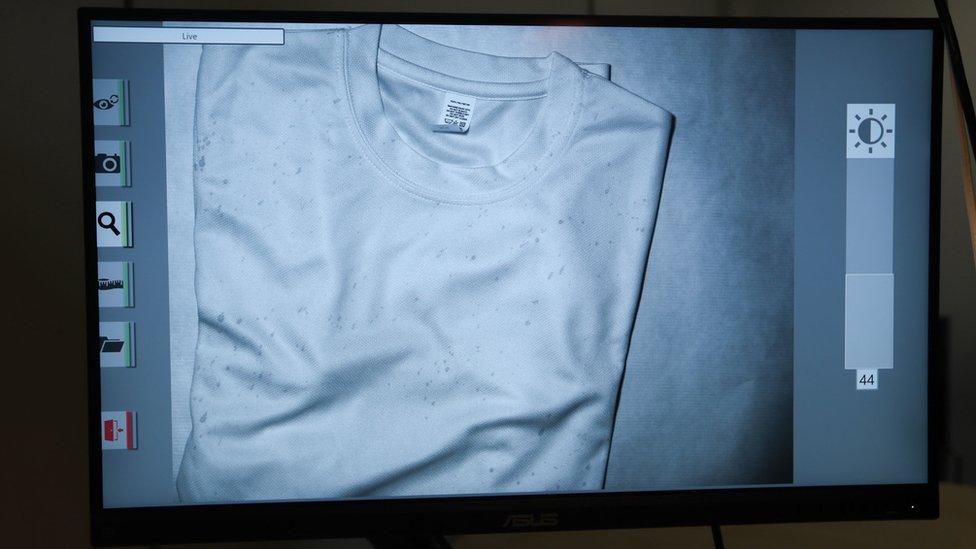New forensic test sees bloodstains on dark clothing in seconds
- Published

Police forensics have relied on microscopes for about 100 years
Forensic scientists can now spot tiny specks of blood on dark clothing in a matter of seconds, the Met Police says.
Traditional methods involve hours of painstaking examination but the new technology means murder suspects can be quickly identified or eliminated.
An increasing number of violent crimes in London are carried out by people in dark clothing, the Met says, and blood must be found rapidly for DNA testing.
The new infrared technology means blood spots can show almost immediately.
The previous method of using a microscope to search for blood on dark clothes, which has been used for 100 years, can take days, and sometimes weeks.
Developed by the Met, the infrared technology can be used even if a blood speck, which can often be crucial evidence, is less than a millimetre in diameter.

A purpose-built, super high-resolution camera shows results on a hands-free computer system
Since last June, the technology has been used for about 40 submissions of evidence, which has speeded up investigations, the force says. These cases have not yet come to court.
Alan Tribe, the Met's director of forensic operations, said scientists had been looking for bloodstains since about 1813 but identifying blood on dark clothing had been an ever-increasing challenge.
He said: "We know that the dynamics of some violent offences in London are that we see stabbings in the street and we would look for the transfer of bloodstains between items of clothing.
"It's pretty routine for us to see black t-shirts, dark vests, dark puffer jackets, dark hoodies appearing as items that we need to search for blood."
However, the traditional method of using a microscope was not completely defunct, the force added, as some fabric dyes will not reflect the infrared light.